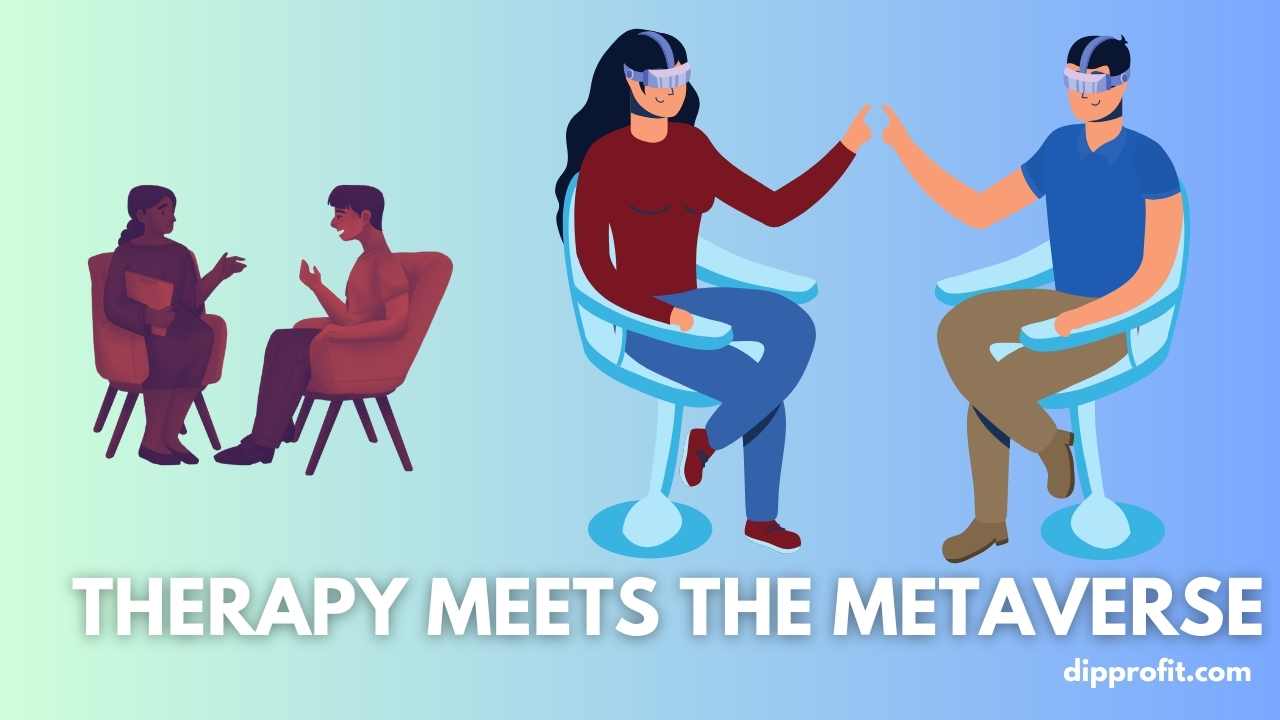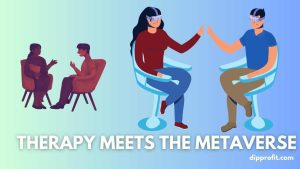

The metaverse is a virtual world that is designed to replicate and simulate the experience of the physical world through digital means.
It is a collective virtual shared space where people can interact with others in real-time, play games, attend events, learn, and exchange ideas.
It is a decentralized network of virtual worlds, where users can create their avatars and explore various places and environments, interact with digital objects, and communicate with others.
Imagine logging into a virtual world on your computer, and being transported into a three-dimensional environment that looks and feels like a real place.
You create an avatar, which is a digital representation of yourself, and begin to explore the world. You can walk, run, fly, or teleport to different locations, such as a beach or a city skyline, and interact with digital objects like furniture or vehicles.
As you move around the world, you see other avatars walking around, chatting with each other, playing games, or attending events.
You can join in on conversations, interact with a therapist, play games with others, or attend concerts and conferences with people from all over the world.
The metaverse is not just a fun place to play and socialize, but also a platform for education, training, and one on one conversations.
Thoughts on Metaverse Therapy Sessions
In the Metaverse, a therapist can provide virtual therapy sessions to their clients, which is similar to traditional in-person therapy sessions. Therapists can create a virtual office or therapy room, where they meet with their clients who are represented as avatars.
During a virtual therapy session, a therapist can use tools like virtual whiteboards, virtual environments, and video conferencing to communicate with their clients effectively.
A therapist can also use virtual objects like stress balls, or other objects to help their clients visualize their thoughts and emotions.
Therapists can help their clients work through various mental health issues such as depression, anxiety, and trauma using a variety of therapeutic techniques.
They can guide their clients through mindfulness exercises, cognitive-behavioral therapy, and other evidence-based therapies to help them cope with their symptoms.
Metaverse therapy can also include virtual reality (VR) technology to create immersive and interactive environments for clients to explore.
VR technology can help simulate real-life scenarios that may trigger anxiety or fears, allowing therapist to guide their clients through exposure therapy.
Overall, metaverse therapy can provide a safe and comfortable environment for clients to explore their mental health issues from the comfort of their own spaces, which can be helpful for individuals who may face barriers to accessing traditional mental health services.
Metaverse Therapy vs Traditional Forms of Therapy
Metaverse therapy is a relatively new form of therapy that takes place in virtual reality environments or metaverses. It uses 3D avatars and digital environments to provide clients with a unique therapeutic experience.
On the other hand, traditional forms of therapy usually take place in face-to-face sessions with a therapist in a physical space, such as a clinic or office.
Here are some differences between metaverse therapy and traditional forms of therapy:
- Accessibility: Metaverse therapy can be more accessible to people who live far away from a therapist or have difficulty traveling due to physical limitations or transportation issues or people who are just naturally introverts. Traditional therapy may be limited to those who can physically make it to a therapist’s office.
-
Anonymity: Metaverse therapy can offer a higher level of anonymity, as clients can use avatars and screen names to hide their identities. Traditional forms of therapy involve face-to-face interactions that cannot be anonymized.
-
Immersion: Metaverse therapy can provide a more immersive experience, allowing clients to explore and interact with digital environments that may be helpful for certain types of therapy. Traditional therapy typically takes place in a more sterile, clinical setting.
-
Human Connection: Traditional forms of therapy may offer a deeper level of human connection between the therapist and client, as they can see each other face-to-face and read each other’s nonverbal cues. In metaverse therapy, avatars and digital environments may create a barrier to this type of connection.
So which is better? No one is better than the other because they both have their flaws and benefits.
Metaverse therapy and traditional forms of therapy both have their unique benefits and drawbacks. The right form of therapy for an individual will depend on their specific needs and preferences.
See also: How to Access the Metaverse on Oculus: A STEP-BY-STEP GUIDE
What Technology is used in Metaverse Therapy

Over time the technology used in the metaverse to interact has changed over the years. Now we have more advanced technology to create realistic simulations of different environments or situations.
The technology used in metaverse therapy typically includes:
- Virtual Reality Headsets: These are devices that use head-mounted displays to create a full 3D immersive experience for the user. Examples of VR headsets used in metaverse therapy include the Oculus Rift and HTC Vive.
-
Motion Controllers: These are handheld devices that allow users to interact with the virtual environment through gestures and movements. They can be used to simulate activities such as lifting objects or drawing.
-
Haptic Feedback: This technology provides physical sensations to the user, such as vibrations or pressure, to enhance the immersion experience. It can be used to simulate sensations such as touch or temperature.
See also: The Best Metaverse Platforms in 2023
What Mental health conditions can be treated with Metaverse Therapy?
According to short research conducted by the experts here at dipprofit, there’s been a conclusion that a lot of mental health conditions could be managed within a safe space by therapists.
- Anxiety disorders: VR therapy can be used to simulate anxiety-inducing situations and help individuals learn coping strategies.
-
Post-Traumatic Stress Disorder (PTSD): VR therapy can recreate traumatic events in a safe and controlled environment, allowing patients to confront and process their emotions.
-
Phobias: VR therapy can gradually expose individuals to their fears, allowing them to build resilience and overcome phobias.
-
Addiction: VR therapy can simulate situations that trigger addiction cravings, allowing patients to practice resisting these urges in a controlled environment.
-
Depression: VR therapy can be used to create positive, mood-enhancing experiences that help alleviate symptoms of depression.
Finding a Metaverse Therapist

Metaverse therapy is still an upcoming theory that is still in its testing phase and therapists aren’t having a go at it like gold but recently, some therapists and volunteers have told come out to voice out their interest in it.
Jewel, a singer-songwriter and mental health advocate, has launched a virtual reality platform called “Innerworld” to provide mental health therapy services to people uniquely and innovatively.
Jewel’s Metaverse will allow users mostly teens and children to enter a virtual environment where they can explore and engage in therapeutic activities such as meditation, art therapy, and cognitive behavioral therapy.
Additionally, users can interact with a virtual therapist in avatars who can provide guidance and support through their mental health journey.
See also: How to create the Perfect Metaverse Avatar in 10 minutes
Innerworld aims to create a safe and inclusive space for people to receive mental health support, especially those who may feel scared due to harmful occurrences occurring in their daily life.
In the statement, she also highlights the potential benefits of virtual therapy, such as increased accessibility and convenience, and the importance of ensuring that virtual therapy platforms are evidence-based and that users receive proper training and support to use them effectively
Innerworld is available on Oculus, Windows, MacOS, and the Apple App Store.
0 thoughts on “Metaverse Therapy: Revolutionizing Mental Health Treatment”